Finding Our Way to the North: The Little Dipper Asterism as Our Celestial Compass
Asterisms are patterns that we can form if we try to connect the stars to one another. They are as interesting as the constellations themselves because they can help us in many ways. One of the most important asterisms is the Little Dipper. It provides us practical help in finding our direction. The Little Dipper asterism helps us find the North Celestial Pole, so it is like our celestial compass! Let us know more about it.

Study Guide
Little Dipper and Big Dipper: Which is Which?
The North
What is a Circumpolar Constellation?
What is a Main-sequence Star?
In Focus: The Little Dipper Asterism
The Little Dipper and Its Neighbors
Stars of the Little Dipper
Mythology of Ursa Minor
Little Dipper Look-alike: The Pleiades
Measuring the Sky with Our Hands
The Changing North Stars
——————————————————————————————————————————-
Little Dipper and Big Dipper: Which is Which?
The Little Dipper and the Big Dipper are two of the most famous asterisms in the night sky. Each of them is a part of a bigger constellation. Their name came from their resemblance to this kitchen utensil:
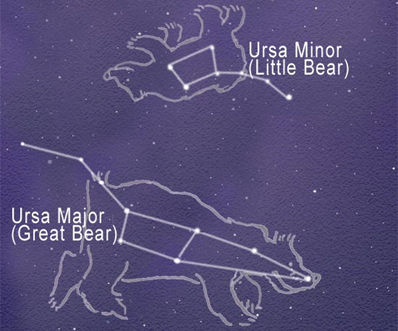
Both asterisms are formed by seven stars. Four of these stars form the bowl of the dipper or the dipper’s cup. The other three stars form the handle.
The Little Dipper is a part of the constellation Ursa Minor. Ursa Minor is also called the Little Bear. This bear appears upside down in the night sky depending on our location. We can see that the stars on the tail of the little bear form the handle of the little dipper.
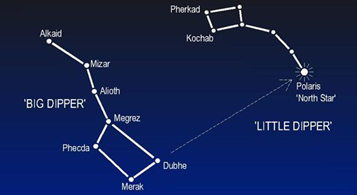
The Big Dipper is from the neighboring constellation of Ursa Major or the Great Bear. This is a much bigger constellation than Ursa Minor. It is also called the Plough in other places. Its asterism really forms like a bear, and the Big Dipper is just a part of it forming its hindquarters and tail.
We can also use the Big Dipper to find the North Star in the Little Dipper. First, we need to find the two stars at the end of the Big Dipper bowl. These stars are Merak and Dubhe. They are called the Pointer stars because they help us spot the North Star, Polaris.
The North
In learning about the Little Dipper asterism and the sky in general, we come across “the North” many times. The concept of the North is used in different aspects, so it helps us understand our sky better if we review them.
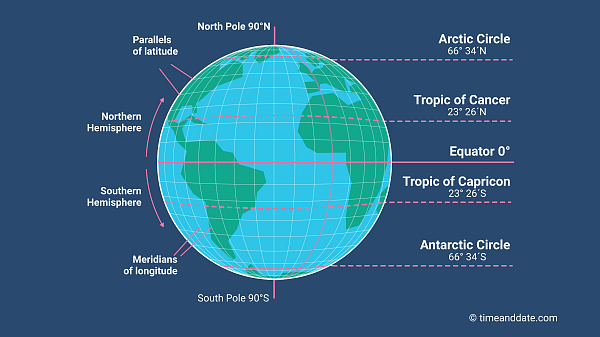
North Pole vs North Celestial Pole
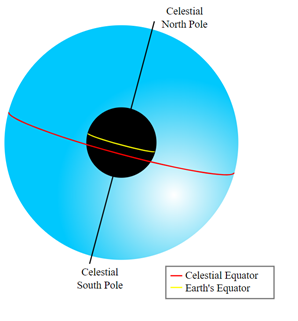
The North Pole is also called the Geographic North Pole or Terrestrial North Pole. When talking about compass and directions, it is called the True North Pole. It is the northernmost point of our planet where its axis of rotation meets its surface.
To understand the North Celestial Pole, it is better to know what the celestial sphere is. The celestial sphere is not a real sphere. It was a concept made so that astronomers can be guided in locating the position of the objects we see in the sky. We can think of the Earth as a smaller ball inside this bigger ball.
Just like the Earth, the celestial sphere is divided by its equator forming the north celestial hemisphere (Northern Sky) and the south celestial hemisphere (Southern Sky). Some constellations can be seen in the Northern Sky while the others are unique in the Southern Sky. The stars we can see from the Earth’s Northern Hemisphere rotate in the North Celestial Pole.
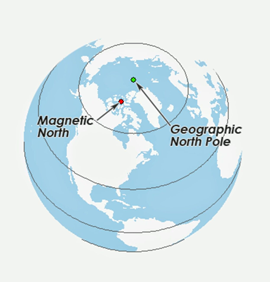
True North Pole vs North Magnetic Pole
The Earth’s North Pole is also called the True North Pole to tell it apart from the North Magnetic Pole. The North Magnetic Pole is what our compass locates. It is a sensitive point that moves over time depending on the magnetic changes in the Earth’s core.
A magnetic compass helps us find North, but what it actually points to is not the True North, but the North Magnetic Pole of our planet. In the night sky, we can also find the North Celestial Pole with the help of Polaris and the Little Dipper asterism.
Quick Check
Understanding the Little Dipper asterism also means understanding its constellation and stars. So, it is a good thing to review some concepts beforehand!
What is a Circumpolar Constellation?
A circumpolar constellation is a constellation that we can see throughout the year. It never sets below the horizon because it is near the celestial pole, either south or north. The other constellations that we can see only during some time of the year are called seasonal constellations.
The constellation Ursa Minor where the Little Dipper belongs to is a northern circumpolar constellation.
Nine Northern Circumpolar Constellations:
- Auriga
- Camelopardalis
- Cassiopeia
- Cepheus
- Draco
- Lynx
- Perseus
- Ursa Major
- Ursa Minor
Three Southern Circumpolar Constellations:
- Carina
- Centaurus
- Crux.
What is a Main-sequence Star?
Main-sequence stars generate energy in their core by fusing hydrogen into helium. Most main sequence stars are also called dwarf stars because of their small size and lower luminosity as compared to other stars. Many stars in the Little Dipper asterism are main-sequence stars.
In Focus: The Little Dipper Asterism
The Little Dipper is a helpful asterism that helps us find the North Celestial Pole. It was reported that the Phoenicians used the stars of Ursa Minor for navigation. Specifically, the North Star helps sailors navigate because they use it to determine their latitude. They do it by measuring the angle between the North Star and the northern horizon. The Little Dipper is like a natural compass, always finding north!
Interestingly, there is a constellation called Circinus which is known as “the Compass.” This compass means a different thing though. It refers to the compass we use for drawing circles. While Little Dipper is in the Northern Sky, Circinus is a constellation that is visible in the southern sky.
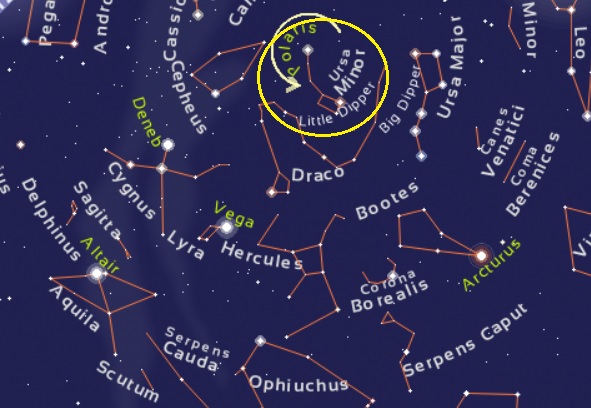
When Can We See the Little Dipper?
The Little Dipper is in the circumpolar constellation of Ursa Minor, so we can see it in the night sky all year long!
The best time to see it is in the month of June at around 9 pm, but that will also depend on the location and the weather. There might be times when it is hard to identify in the night sky because of light pollution.
The North Star appears differently for every observer, depending on their location in the Northern Hemisphere. Observers near the North Pole will see Polaris directly above them. In the equator area, it is seen near the horizon.
Where Can We See the Little Dipper?
We can locate the Little Dipper by locating its constellation. The constellation of Ursa Minor is in the third quadrant of the northern hemisphere (NQ3). It is between latitudes +90° and -10°, with approximate coordinates of about 15 hours right ascension and 80° north declination.
The Little Dipper and Its Neighbors
We can also see the Little Dipper because of its neighboring constellations. It is bordered by the constellations of Camelopardalis, Draco, Cepheus, and Ursa Major.
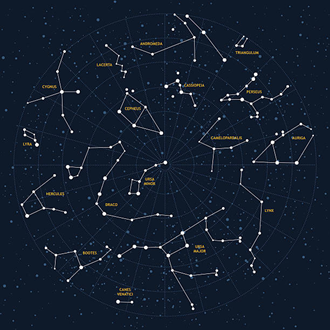
It is interesting to know that the stars of the Ursa Minor constellation were actually part of the constellation of Draco. The stars formed the wings of the celestial dragon before Thales of Miletus created them as a separate one at around 600 BC.
Below is a rare map of the stars showing Ursa Minor near the center. It was made for Burritt’s 1856 edition of the Atlas by W. G. Evans of New York.
Stars of the Little Dipper
Seven stars form the Little Dipper asterism. The four stars forming the dipper’s cup are Pherkad, Kochab, Anwar al Farkadain, and Ahfa al Farkadain. The three stars forming the handle of the dipper are Urodelus, Yildun, and Polaris. The handle of the dipper forms the little bear’s tail.
Let us learn about each of the stars.
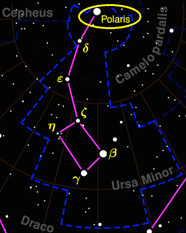
Polaris (α Ursae Minoris)
Polaris is also known as Alpha Ursae Minoris. Its abbreviations are Alpha UMi and α UMi. More than that, many of us know it as the North Star or the Pole Star. This yellow supergiant is the brightest star in the Ursa Minor constellation. It is the current north star because it is located very near to the north celestial pole.
The northern star is said to be 433 light-years away from us. The magnitude, or brightness, of Polaris, has been changing because its primary component is a variable star. We can see it in the naked eye since it has an apparent visual magnitude of about 1.97. In the Little Dipper asterism, we can see it at the end of the handle of the little dipper. It also marks the tail of the Lesser Bear of Ursa Minor.
Polaris is a triple star system. Below is an image from NASA’s Hubble Space Telescope that shows the components of the North Star:

-
Polaris Aa (α UMi Aa)
Polaris Aa is the primary star in the Polaris triple system. It is an F7 yellow supergiant having 5.4 solar masses. Polaris Aa is a variable star which means its brightness changes as we see here on Earth. Specifically, it is a classical Cepheid variable star because it pulsates radially for days to weeks. These pulsations cause changes in the star’s brightness.
-
Polaris Ab (α UMi Ab)
The smaller Polaris Ab orbits with Polaris Aa. The two are a very close binary. Polaris Ab is an F-type star having a solar mass of 1.26. This close companion was discovered in 1929.
-
Polaris B (α UMi B)
Polaris B is an F-type star with a solar mass of 1.39. We can see it using simple telescopes, just like William Herschel did when he discovered it in 1779.
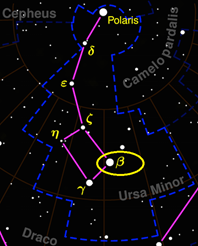
Kochab (β Ursae Minoris)
Kochab is also called Beta Ursae Minoris. It has the abbreviations Beta UMi and β UMi. We can see it in the bowl of the Little Dipper. In that part of the asterism, Kochab is the brightest star. It has an apparent visual magnitude of 2.08, making it the second brightest in the constellation of Ursa Minor. Kochab is said to be 130.9 light-years from the Sun. A massive planetary companion was discovered in Kochab. This planet is 6.1 times bigger than Jupiter.
The origin of the name Kochab has an uncertain history. Some say it is related to the Renaissance period in Europe while others relate to the Arabic and Hebrew languages. This star is a giant star of K4 classification, which we can see in its orange hue. It is more luminous than our Sun by about 130 times.
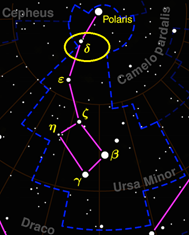
Yildun (δ Ursae Minoris)
Yildun is also known as Delta Ursae Minoris. This star has a white hue and has an apparent magnitude of 4.36. It has 2.35 times the mass of our Sun. In the constellation of Ursa Minor (the Little Bear), we can see it as one of the stars in the little bear’s tail. It is a dwarf star with a distance of 172 light-years from our Sun.
The name Yildun is from the Turkish word “yıldız” meaning “star.” This star is believed to be 327 million years old already. It is more luminous than the Sun by about 48 times. It has a companion of 12th magnitude with a solar mass of about 0.16.
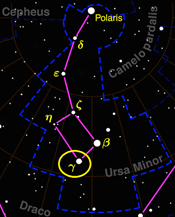
Pherkad (γ Ursae Minoris)
Pherkad is Gamma Ursae Minoris in the Bayer system. It is the third brightest star in the Ursa Minor constellation, having 3.05 magnitude. Having said that, we can see it with the unaided eye. It is an A-type supergiant star with intermediate luminosity. We can see this white-hued star at the end of the dipper pan. This star is 487 light-years from the Sun.
The name Pherkad is from the Arabic word “farqad” meaning “calf”. It is originally from “aḫfa al farkadayn” which means “the dim one of the two calves.” The two calves here are Pherkad and the brighter star, Kochab. A dimmer star called 11 Ursae Minoris shares the same Bayer designation with Pherkad. To avoid confusion, Pherkad is labeled γ² Ursae Minoris and Pherkad Major while 11 Ursae Minoris is referred to as γ¹ Ursae Minoris and Pherkad Minor.

Ahfa al Farkadain (ζ Ursae Minoris)
Another name for Ahfa al Farkadain is Zeta Ursae Minoris. It is abbreviated as ζ UMi or ζ Ursae Minoris. It is an A-type star with an apparent magnitude of about 4.28. Its mass is 3.4 times bigger than the Sun’s and is also 200 times more luminous than it. Though it is a dwarf star, Zeta Ursae Minoris is already becoming a giant star.
Ahfa al Farkadain is a main-sequence star that is about 380 light-years from us. Interestingly, the formal name of this star is from Arabic meaning “the dimmer of the two calves,” relating it with the brighter star of Eta Ursae Minoris. Remember that the same phrase was also the origin of another star’s name, Pherkad.
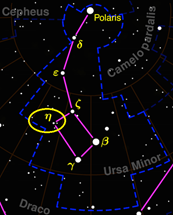
Anwar al Farkadain (η Ursae Minoris)
Anwar al Farkadain is also called Eta Ursae Minoris. It is an F-type main-sequence star. It has an apparent magnitude of +4.95, so we can see it faintly with our unaided eyes. This is believed to be about one billion years old already. The mass of Eta Ursae Minoris is 1.35 times the Sun’s mass, with a distance of 97 light-years.
The name of Anwar al Farkadain is also related to Zeta Ursae Minoris, another star of the Ursa Minor constellation. Some charts call it “the brighter of the two calves” (anwar al-farqadayn) because the dimmer one is Zeta Ursae Minoris. Though the phrase is used as its formal name, people relate the phrase more with Kochab and Pherkad.
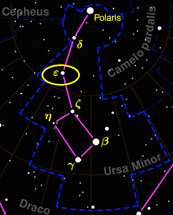
Urodelus (ε Ursae Minoris)
Urodelus is called Epsilon Ursae Minoris in the Bayer designation. It is one of the stars of Ursa Minor, a northern circumpolar constellation. It has an apparent magnitude of 4.19, so we can see it faintly in the naked eye. Epsilon Ursae Minoris is 300 light-years from the Sun but it is going nearer at about −10.57 km/s of radial velocity.
Urodelus is a spectroscopic binary star system. Its two stars are very close to each other. One fascinating fact about these two is that they eclipse one another as we see here on Earth. The primary component is a G-type giant, while the second one is a main-sequence star of A or F type.
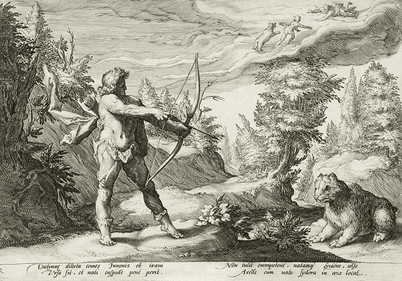
Mythology of Ursa Minor
In Greek Mythology, Ursa Minor and Ursa Major came to be because of Callisto and her son Arcas.
The god Zeus had a child with a beautiful maiden named Callisto. His unfaithfulness made his wife, Hera, very angry. After Callisto gave birth to his son Arcas, Hera turned the mother into a bear.
Years passed and Arcas has turned into a young man. He was hunting in the forest one day when he saw a bear. The bear was strange. There was something about it that he did not understand. Little did he know that it was his mother. When he was about to shoot it, Zeus intervened and prevented Arcas from killing his own mother.
Zeus has also turned Arcas into a bear and put the mother and son in the sky together. When Hera heard about this, she was furious! She talked to Poseidon to prevent the two from swimming in the sea.
Callisto became Ursa Major the Great Bear and Arcas turned into the Ursa Minor the Little Bear as we know today. As we see now, the two constellations are circumpolar. They do not dip below the horizon. Poseidon must have granted Hera’s request in preventing the two bears from bathing!
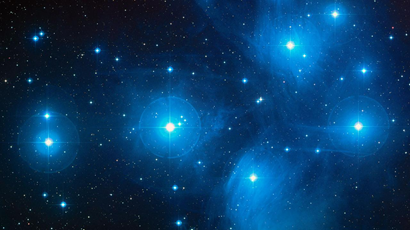
Little Dipper Look-alike: The Pleiades
Many people have been mistaking the Pleiades as the Little Dipper. And maybe you have too! First, let us look at the picture. Do you think it is the Little Dipper?
The picture above is the Pleiades. We can see that its stars are in a somewhat similar position to the stars of the Little Dipper. No wonder why many people confuse them with each other in the night sky!
We have learned about the Little Dipper already. So what is the Pleiades?
The Pleiades is a star cluster. A star cluster is a large group of stars. It can have less than a hundred members or millions of them. The star cluster the Pleiades is also called the Seven Sisters. Some call it Messier 45. It is one of the few star clusters that we can see in the naked eye because it is one of the closest to our planet. It is about 444 light-years away, making it the closest Messier object to us!
The Pleiades mostly contain hot blue B-type stars. Out of the hundreds of stars in this cluster, we can only see the few bright ones, especially in the dark skies. It is on the north-west side of the Taurus constellation.
The misty stars of this star cluster are usually related to the winter season. It stays in the sky the longest in the month of November, up until dawn. The number of stars we can see in this star cluster depends on our location. Most of the time, people only see six stars in the unaided eye. The story of the Seven Sisters is an interesting story related to this celestial object.
The Little Dipper and the Pleiades are two very different things aside from their star position as we see on Earth. Here are their basic differences:
The Little Dipper
- Asterism
- Seven stars
- Part of the Ursa Minor Constellation
- Visible All year (circumpolar)
The Pleiades
- Star cluster
- About 800 stars (with six stars usually visible to the naked eye)
- Visible During winter months
- Part of the Taurus Constellation
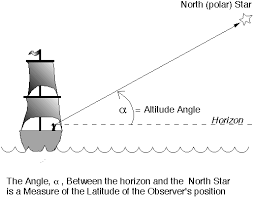
Measuring the Sky with Our Hands
Our hand is a powerful gift. Aside from using it in our day to day lives, we can also use it to measure things. One such instance is using our hands as natural equipment in knowing our latitudes.
We can also use the same concept in measuring the angular distances between celestial objects. By learning how it is done, we can truly understand why Polaris, the North Star, is an important fixture in our night sky.
Locating Latitudes
We already know that the North Star helped sailors find their latitude in the past. By finding their latitude, they will have an idea about their location even if they are in the middle of the wide ocean. We can also estimate our latitudes by just using our hands!
The angle between the highest point of the North Star and the horizon will tell us our latitude.
Different parts and positions of our hands correspond to certain angular degrees. Look at the pictures below from the site Exploring Our Fluid Earth:
In the picture above, the location of the person is at 20 degrees latitude because the distance of the Polaris to the horizon is about two clenched fists. For observers in the equator, the observer’s latitude is at zero degrees since the North Star is very near the horizon.
Determining Distances
By using the same knowledge of angular degrees using our hands, we can also measure the distance between stars and other celestial objects.
Remember that one way to find Polaris is by following the pointer stars of the Big Dipper. Merak and Dubhe point to the end of the handle of the dipper where the Polaris is. The distance from Dubhe and the Polaris is about three fists. We can say that the angular distance between them is 30°.
The Changing North Stars
Polaris is called the North Star because it is very close to the North Celestial Pole. At least for now. After some time, there will be a new North Star or Pole Star. It is because the Earth’s axis rotates. This rotation of our planet’s axis is called precession. To get a glimpse of what it is, we can imagine the Earth as a spinning top. Notice the spinning top. It wobbles as it is about to fall over.
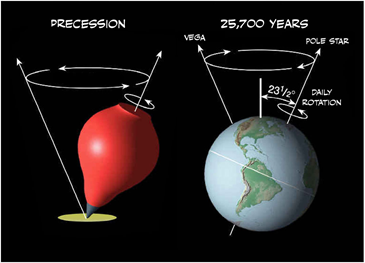
Precession happens because of the gravitational pull of both the Sun and the Moon on Earth. Because of the Earth’s precession, the North Celestial Pole will be pointing closer to a different star.
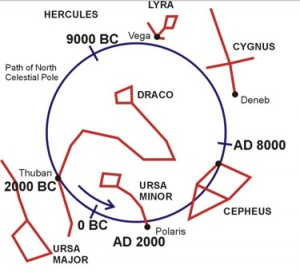
Aside from affecting the North Star, it also affects the seasons because of the changes in the orbit. It may sound complicated but this is not something that we should worry about because the period of precession is estimated to be about 26,000 years. We can learn more about it here.
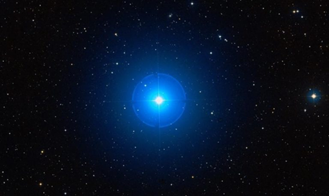
Thuban
Thuban is a faint star in the constellation of Draco. It was the North Star before Polaris. To give us some idea of how long ago that was, let us go back to the time when Egyptians were still building the pyramids. That was about 5,000 years ago! The North Star at the time played a great role in constructing the pyramids. The passageways of these pyramids were actually aligned with the sky.
Thuban was said to be closer to the north celestial pole than Polaris is now. It had a distance less than ten arc-minutes to the pole at around 2830 BCE. Even after that, it was one degree off the pole and never went farther than 5 degrees even after 900 years.
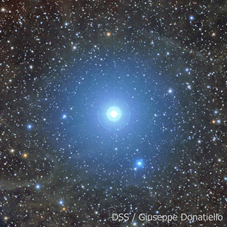
Polaris
Polaris is known as our pole star now. It was known as “stella maris” in the medieval period meaning “star of the sea.” Its closest position in the north celestial pole will be in 2100. After that, the north celestial pole will drift away from Polaris. The current pole star of the South Celestial Pole is Polaris Australis. This Southern Star is rather dim, with an apparent magnitude of 5.47.
Before Polaris, two other stars in the Ursa Minor constellation served as the twin North Stars. These stars are Kochab and Pherkad. Together they were called the “Guardians of the Pole.”
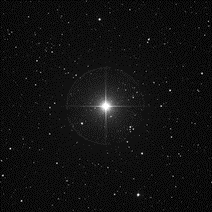
Errai
Errai is also called Gamma Cephei. It is the next likely candidate to be the next North Star after Polaris. This binary star system is in the constellation of Cepheus. It is visible to the naked eye, having an apparent magnitude of 3.21. The northern celestial pole will be closest to it at around 4000 CE. After it, the next North stars will be from the same constellation of Cepheus. Iota Cephei will follow it, and then Alderamin.
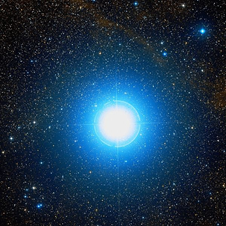
Deneb
Deneb is a bright star in the constellation Cygnus. In fact, it is the 19th brightest star that we can see at night. It is the most likely North Star to be after Alderamin. By 9800 AD, it will be 7° off the north celestial pole. The next pole star after it will be Delta Cygni. It is also in the constellation of Cygnus. The north celestial pole will be closest to it at around 11,250 AD.
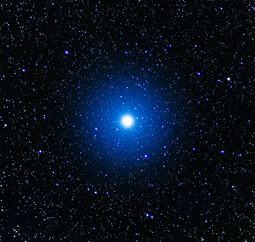
Vega
Vega is an important star. Many astronomers have considered it “arguably the next most important star in the sky after the Sun.” It is the brightest star in the Lyra constellation. Overall, it is the second brightest star in the northern sky and the fifth brightest in the entire night sky. It was once the pole star of the north at around 13,000 BC. It will guide everyone toward the celestial north again around 12,000 AD.
